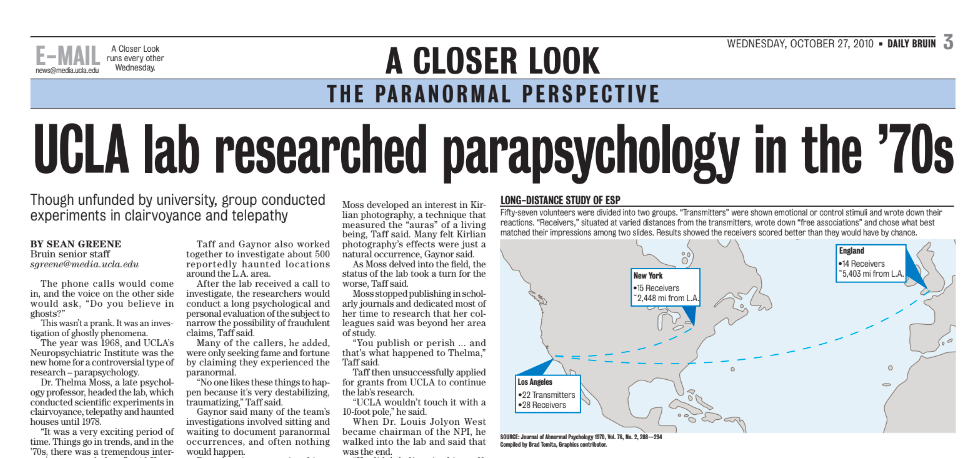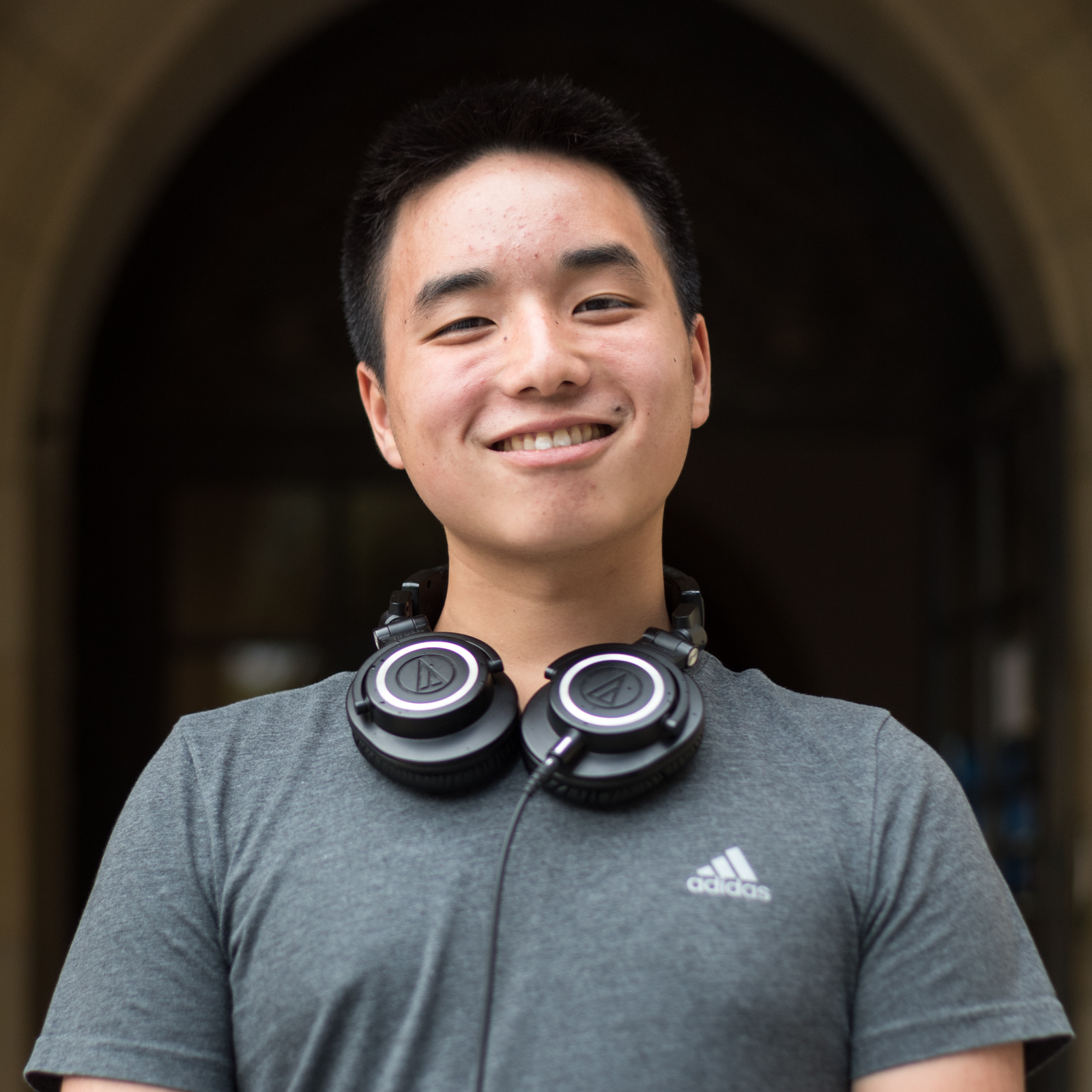Throwback Thursday: A look back at UCLA’s paranormal research during the ’70s

(Daily Bruin archive)

By Ryan Wu
Oct. 31, 2019 6:19 p.m.
Throwback Thursdays are our chance to reflect on past events on or near campus and relate them to the present day. Each week, we showcase and analyze an old article from the Daily Bruin archives in an effort to chronicle the campus’ history.
“The Bible calls it having visions, and there’s scientists that call it precognition. … They all mean seeing the future.”
That’s from “The Shining,” Stephen King’s 1977 novel about a boy named Danny Torrance with psychic powers. It wasn’t King’s first look into the subject, nor would it be his last.
“Carrie,” released two years earlier, features a girl with telekinetic abilities exacting revenge on her high school after a cruel prank gone wrong.
Both “Carrie” and “The Shining” came out during a prolonged flush of media and pop culture that featured powerful psychics and mind readers. Shirley Jackson’s “The Haunting of Hill House” featured psychic researchers as heroes, while at the same time, Stan Lee created Professor X, the psychically gifted leader of the original X-Men team.
Believe it or not, this pop culture wave didn’t just start on a whim. The supernatural abilities were based on real science at the time. In 2010, the Daily Bruin took a look at Thelma Moss, a UCLA professor who was one of the key paranormal researchers during the ’70s.
Before joining UCLA, she was an actress both on-screen and onstage, and a screenwriter responsible for movies like Paramount’s sci-fi thriller “The Colossus of New York.” After a prolonged fight with depression, she enrolled at UCLA, where she became interested in the supernatural, eventually leading the parapsychology lab from 1968 to 1978.
Parapsychology – the study of psychic phenomena, such as clairvoyance, poltergeists and hauntings – got its start in the mid-1850s as psychologists began seriously studying the claims of mediums and psychics.
In 1911, Stanford became the first university to study extrasensory perception and psychic phenomena in a laboratory setting, with Duke following in 1930. Moss’ key innovation came from her use of “Kirlian photography,” a technique that combined photographic film with high electric current that purported to show someone’s “life aura.”
In modern times, it’s difficult to imagine serious money being put into the study of apparitions and clairvoyants, but from the ’30s to the ’90s, that’s exactly what happened.
Parapsychological researchers like Joseph B. Rhine and Karl Zener became sensations for their tests with ESP and card-guessing. In the ’50s, the CIA began Project Star Gate, a serious government attempt to use parapsychology to spy on the Soviet Union. In Moss’ lab, thousands of individuals who claimed to experience hauntings or have psychic powers came to be interviewed.
Daily Bruin staff looking into the lab spoke to Kerry Gaynor, a former researcher who worked with Moss.
“It was a very exciting period of time. Things go in trends, and in the ’70s, there was a tremendous interest in parapsychology,” Gaynor said in the article. “We were getting calls and letters every day. We were hearing about this kind of phenomena from all around the country and all around the world.”
Of course, ESP’s moment didn’t last. Even from the start, Rhine’s experiments came under attack for their lack of replicability. Project Star Gate ended after failing to produce any useful applications. Kirlian photography fell by the wayside when it turned out those “auras” were just moisture from the body.
The Daily Bruin article cited James Randi, a retired stage magician and professional skeptic, who noted the tendency for people to “fool themselves” when it came to psychics and mediums.
As of now, there are only two American universities that still have parapsychology departments: the University of Virginia and the University of Arizona. UVA currently offers salaried research positions for their Division of Perceptual Studies, which uses “EEG, transcranial optical imaging, and fMRI to study altered states of consciousness and paranormal abilities.” UA offers a similar program at its Laboratory for Advances in Consciousness and Health.
Otherwise, the phenomenon lives on in the movies: Danny Torrance returns to theaters next week with “Doctor Sleep,” while Netflix’s “Stranger Things” continues to feature the psychically powered Eleven.
Perhaps that’s how Moss would’ve wanted it: As she says, the type of person who’s most likely to possess these paranormal “faculties” are “characteristic of the artist.” Despite a later life spent in academia, she remained connected to Hollywood, serving as a consultant on such famous films as “Poltergeist” and “The Exorcist.”
As it stands, parapsychology will probably remain outside the scientific mainstream. But then again, haven’t we all experienced something we couldn’t explain?


